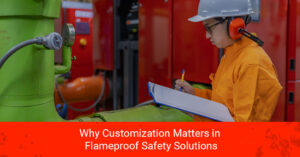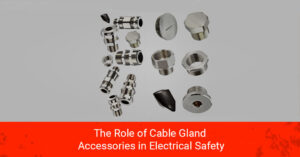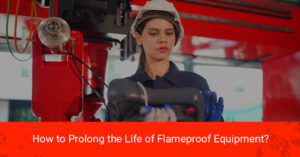Flameproof products play a crucial role in safeguarding life and assets in hazardous environments. These products prevent the spread of flames and prevent explosions in environments that have flammable substances.
However, misconceptions surrounding these essential safety measures can cloud our understanding of their true benefits. This blog will bust myths and misunderstandings surrounding flameproof products.
1. Flameproof Products are Unnecessarily Expensive
There’s no denying the fact that flameproof products are costlier than standard products. However, the higher cost of flameproof products is because of their safe construction and design. These products can resist flames and prevent explosions in hazardous environments. These products are rigorously tested and certified safe to meet necessary safety standards. While the initial investment might seem higher, the potential costs associated with accidents and damages in non-flameproof environments far outweigh the price of ensuring adequate safety measures for these essential products. Products like flameproof panels and flameproof fans are strategically priced and are almost on par with standard products.
2. Flameproof Products are Only for High-Risk Industries
There is a perception that only hazardous environments require such flameproof specialized equipment. However, flameproof products are essential for any setting where flammable substances are present, regardless of the industry. These products ensure safety by preventing ignition sources and containing flames, making them valuable not only in chemical plants, oil refineries, and mining operations but also in commercial spaces, manufacturing facilities, and other locations where flammable materials may be encountered.
3. Flameproof Products are Bulky & Unattractive
There’s an age-old myth that flameproof products are heavy and unattractive. However, these days, manufacturers are now prioritizing functionality and appearance. Advancements in technology and design have led to the creation of sleek and aesthetically pleasing flameproof equipment. Flameproof products now come in different sizes and designs. They not only provide safety in hazardous environments but also complement the aesthetics of the space where they are used.
4. Flameproof Means Fireproof
The misconception that “flameproof” means “fireproof” arises from the similarity in terminology, but these terms have different meanings. Flameproof products are designed to prevent the propagation of flames. They are designed to withstand the effects of sparks or high-temperature environments, but they are not entirely fireproof. Flameproofing involves creating enclosures or barriers to prevent flames from escaping and igniting surrounding flammable substances.
5. Flameproof Products Guarantee Total Safety
The misconception that flameproof products guarantee total safety stems from an assumption that these products can always prevent fires and explosions. While flameproof equipment is designed to significantly reduce the risk of such incidents in hazardous environments, it cannot offer absolute protection. Certain factors, such as human error, improper installation, or lack of maintenance, can still lead to potential risks.
To ensure optimal safety, it is essential to complement flameproof products with other preventive measures and safety protocols. Regular inspections, employee training, and adherence to industry standards are equally crucial. Viewing flameproof products as a go-to solution to safety may lead to complacency.
6. Flameproof Products are Difficult to Install & Maintain
The misconception that flameproof products are difficult to install and maintain is baseless. While these specialized products require proper knowledge and expertise for installation, manufacturers often provide detailed instructions to ensure the correct setup. Moreover, certified professionals can assist with installation to guarantee compliance with safety standards. As for maintenance, routine inspections are necessary to ensure continued effectiveness, but this process is like standard equipment upkeep. With the right guidance and support, installing and maintaining flameproof products can be straightforward, contributing to a safer environment in hazardous areas.
7. Flameproof and Explosion Proof are the Same
Flameproof and explosion-proof are related concepts, but they are not the same. Flameproof products prevent flames from escaping an enclosure and igniting flammable substances outside. On the other hand, explosion-proof products prevent sparks or heat from causing explosions within the enclosure. In simple terms, flameproof stops flames from getting out, while explosion-proof stops sparks from causing explosions inside. Both are crucial for safety in hazardous areas, but they address different aspects of potential risks related to fire and explosions.
Bottom Line
Demystifying the misconceptions surrounding flameproof products reveals their vital role in ensuring safety in hazardous environments. Understanding their true benefits, including cost-effectiveness, versatility, and aesthetic appeal, can help you make an informed decision.








